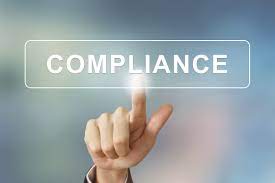Matt Galvin, Counsel, Compliance & Data Analytics at the DOJ and one of the experts leading the DOJ’s data analytics initiative, highlighted in another talk, the proactive use of data to generate cases related to the FCPA and emphasized that this is just the beginning. The DOJ expects companies to adopt a similar data-driven approach to compliance. In her speech, Argentieri speech where she stated, “just as we are upping our game when it comes to data analytics, we expect companies to do the same.” This expectation extends beyond simply tracking trainings, policies, and investigations. The DOJ’s focus is on monitoring third parties throughout the lifespan of the relationship, not just during the onboarding process.
This means that while due diligence and background checks are essential, the real risk of fraud occurs during the actual business transactions with third parties. Companies need to go beyond initial checks and continuously monitor high-risk vendors, contract terms, and other relevant data sources. By mapping risks to data sources and implementing effective tests, companies can identify and prioritize risky transactions. The increasing accessibility and cost-effectiveness of data analytics have made it a viable option for companies of all sizes. It can help companies demonstrate effective compliance programs, uncover hidden financial irregularities, and improve overall efficiency. The importance of continuous data analysis in compliance programs was highlighted by the Bank of America CFPB enforcement action.
However, implementing a data-driven compliance program comes with its own set of challenges. There is still confusion among the compliance community regarding what data analytics entails and how it should be applied. Data-analytics should be seen as a process-oriented approach rather than treating it as a one-time project. Data analytics should be integrated into the compliance program as a continuous business process, similar to third-party due diligence.
The Bank of America CFPB enforcement action case serves as a reminder of the importance of the use of data analytics in corporate compliance. Bank of America had the necessary data and tools to build an analytics program, but they failed to effectively utilize it, leading to compliance issues. This case highlights the need for companies to not only have data analytics capabilities but also to ensure they are properly implemented and maintained.
While data analytics can be a powerful tool for corporate compliance, there are challenges associated with its use. Companies must navigate the tradeoffs involved in balancing different factors, such as the level of sophistication required, resource allocation, and the potential risks of self-disclosure. Additionally, companies must consider the potential criticism they may face if they fail to effectively utilize their analytics tools in the event of a major compliance violation.
The Argentieri speech highlighted the DOJ’s (and SEC’s) increasing focus on data analytics for corporate compliance highlights the importance of this tool in identifying and addressing corporate misconduct. Companies, especially larger ones, are expected to enhance their data analytics capabilities and may face increased pressure for voluntary self-disclosure. However, companies must also navigate the challenges and tradeoffs associated with data analytics to ensure effective compliance and mitigate risks.
The DOJ’s increasing use of data analytics for proactive enforcement has far-reaching implications. Companies must recognize the importance of adopting a data-driven approach to compliance and invest in the necessary resources and technology. By doing so, they can not only meet the DOJ’s expectations but also improve the effectiveness of their compliance programs and mitigate the risk of fraud.
The DOJ’s increasing use of data analytics for proactive enforcement signifies a significant shift in their approach to combating white-collar crime. Companies must embrace this data-driven approach to compliance, continuously monitor high-risk transactions, and invest in the necessary resources and technology. By doing so, they can demonstrate effective compliance programs, uncover hidden financial irregularities, and improve overall efficiency.





